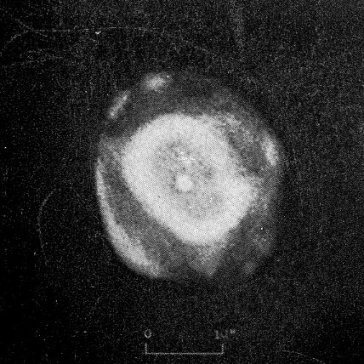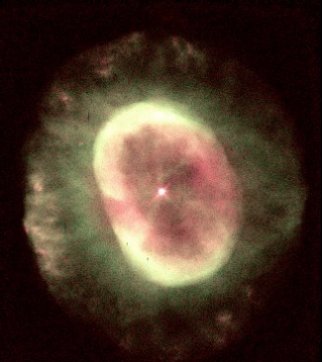NGC 7662
THE BLUE SNOWBALL
"Exceedingly bright" (Curtis), but small. The bright inner portion
of this classic "double shell" planetary nebula in Andromeda (about 4.5 degrees southwest of
Lambda Andromedae) averages only 15 seconds of
arc across, rendering it difficult to see detail. The outer
portion extends to a diameter of some 30 seconds, but it is faint
and harder to see. On the left is Curtis's Lick drawing, made from
several photographic images. The right hand picture shows the much
more detailed Hubble view, though even that is a bit fuzzy (and
not very blue). The
bright inner ring, expanding at a speed of 30 kilometers per
second, seems to have been produced by a hot wind from the central
star shovelling the nebular gas in front of it. At an uncertain
distance of perhaps 2500 light years (estimated from the angular
expansion coupled with expansion velocity of nearly 30 kilometers
per second), the outer portion stretches across roughly 0.4 light
years, the about half that much. The distance, though, could be
half again as great.
The hot, blue 13th magnitude (13.2) central star, with a
temperature of 110,000 Kelvin, is still heating at a roughly
constant luminosity of 1000 or so times that of the Sun. It will shortly turn the corner and begin
to cool and fade as a nascent white dwarf.
Left: Image and quote by H. D. Curtis from Publications of the Lick
Observatory, Volume 13, Part III, 1918. Right: Howard Bond (STScI)
and NASA/ESA.



